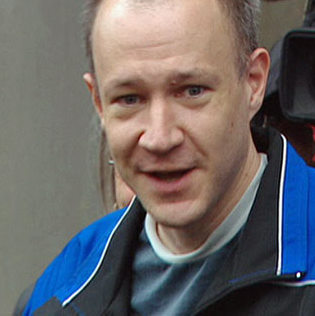
Chemicals found in the home of man arrested in connection with the violence-marred G20 summit could have been combined into a bomb powerful enough to destroy a bus, his trial heard Wednesday.
Crown witness Crawford Anderson, an explosives expert who works with the Canadian military, did admit he saw no evidence that Byron Sonne had actually made any explosives.
But Anderson testified he had no doubt Sonne could easily have produced devices to blow things up.
"It is my opinion that there were more than enough materials present to make explosives, and to make improvised explosive devices," Anderson testified.
He also said he could think of no reason Sonne had the materials other than to make explosives, which he said the accused could have done in hours or days.
At the same time, Anderson's testimony highlighted how many products and items that can be used to make bombs — such as chemical cleaners, solvents and a hotplate — are commonly found in many homes and are readily available at hardware stores or supermarkets.
"That is the difficulty with a lot of this stuff," Anderson said at one point.
"I have seen improvised detonators made out of cheap Bic pens."
When Crown lawyer Liz Nadeau asked about hydrogen peroxide, Anderson replied: "It's the sort of bleach you would use if you wanted to look blond."
Drain and driveway cleaners, sugar, vegetable oil, almond flour, nail-polish remover and PVC piping, among many other things, could all be put to no good by a determined amateur chemist, court heard.
For example, mixing ammonium nitrate — commonly used as fertilizer — with diesel or aluminum powder could become a powerful bomb, he said.
At times, Ontario Superior Court Justice Nancy Spies had difficulty following Anderson's chemistry and bomb-making explanations, asking numerous questions about detonators and setting off blasts.
"It's not unstable, it's just sensitive," Anderson said about one potentially explosive mixture.
Sonne, 39, who was arrested a week before the G20 summit in June 2010 and held for 11 months before getting out on bail, is charged with four counts of possessing explosives with abbreviations such as TATP and HMTD.
A plethora of chemicals, including various acids and dozens of hexamine fuel tablets, were seized from Sonne's upscale Toronto home along with laboratory devices and electronic bits and pieces.
Sonne also had ordered a book on playing with high explosives and had an Animal Liberation Front article on setting fires using electrical timers.
The Crown is not trying to prove that Sonne planned to blow anything up at the G20, only that he had "precursor" materials he intended to make into explosives and had a fascination with the summit.
He also faces a charge of counselling mischief "not committed" by, for example, publicizing how to climb the security fence set up at the G20.
Supporters of the self-described security geek say he was publicly trying to expose flaws in the expensive effort to protect world leaders.
He says he was a model-rocket enthusiast and made crystals at home.
Clearly, the neatly labelled containers of various chemicals and the apparatus went well beyond what most Canadians have at home, evidence shows.
Still, none of the chemicals was illegal.
Anderson, who works out of Suffield, Alta., said "recipes" for explosives are available over the Internet.
Sonne could have made up to eight kilograms of explosives that could have done "significant" damage in a confined space, the witness said.
He did allow no small metal tubes typically used for detonators were found at the home.
He also told defence lawyer Peter Copeland that making explosives required care and painstaking precision over many hours.
Anderson's cross-examination is expected to wrap up Thursday afternoon.
The trial will then resume for at least three weeks starting March 19.